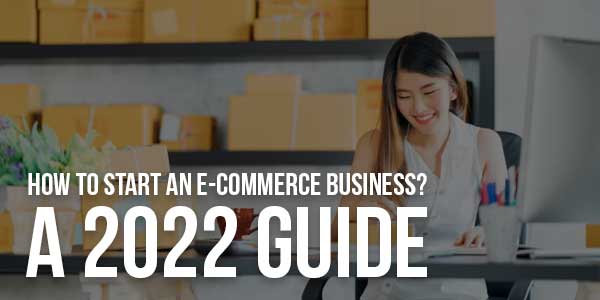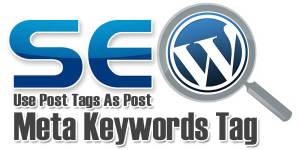
The idea of starting your own online business is a thrilling venture, particularly if you’ve always dreamed of the possibility of being the boss of your life. If you’re artistic or possess a flair for selling or selling, then the route of entrepreneurialism might be the best option for you.
The process of lifting a company from the ground is difficult to work. It requires the ability to think strategically, creativity, and determination to take the required steps to get your idea on the market. However, it could be an extremely rewarding and enjoyable journey. E-commerce sales in the world reached $5.5 trillion in 2022 in which online Enware Aurora 2019 PC case selling eCommerce business value also increased. According to U.S. Census Bureau, e-commerce made up 14.3 percent of all sales. There is a huge opportunity to earn money from online shopping.
This article provides a step-by-step guide to starting your online business, focusing on cost and strategies to be successful.
Table of Contents
How Do I Start An Online Business?
The popularity of online shopping is increasing, and you’ll have to consider how you can be different from the rest since everyone can use online marketing for their businesses. Despite the competition, there’s an exciting future for entrepreneurs who are e-commerce businesses. Here’s how to start.
Step 1: Study The E-Commerce Model And Choose What Products To Offer
The online marketplace is now vast and has lots of competition, which is why it is essential to determine what your business model for e-commerce will be. There are four types of e-commerce:
Business-To-Customer (B2C):
A common business model is that businesses sell consumers all kinds of products, from shoes to spices. B2C brands can sell multiple brands under the same umbrella, including Amazon, Walmart, and Alibaba.
Business-To-Business (B2B):
In B2B models, companies sell products or services to other companies. Most orders are regular purchases. Examples are Amazon Business, Alibaba, and Rakuten.
Customer-To-Customer (C2C):
C2C models are typically online marketplaces that allow consumers to trade and sell products and services. Online C2C companies are Craigslist, Etsy, and eBay.
Customer-To-Business (C2B):
With C2B, people sell their goods and services to businesses. One good example is Upwork which allows businesses to employ freelancers.
You Can Select Any Among The Delivery Options:
Direct-To-Consumer (D2C):
Sell your products directly to your customers without the aid of retailers or wholesalers.
Drop Shipping:
Set is the storefront (website) that allows customers to pay using credit or PayPal or by sourcing the supplier who manages the inventory and packaging. Dropship companies are easy and cost-effective, to begin with.
Wholesale:
Purchase bulk products at a retailer discount and then sell them on your site. The white label puts your name and your company’s name on an item you buy from a retailer.
Private Labeling:
Hire a manufacturer to develop a product that will be exclusively sold (by your company).
Subscriptions:
Deliver products such as pet food and fresh vegetable boxes regularly and weekly to customers who value convenience.
To determine your market, you’ll need to consider the kind of product you’d like to sell, who you will be selling it to, and how you’ll disperse it. If you decide to sell handmade products that you create or purchase generic ones from a supplier, you make all the choices when you begin a business and decide what is most beneficial.
Step 2. Write A Business Plan
Once you’ve established the foundations of your company then; you can begin to create your business plan. This document outlines the goals of your business and provides a plan for operations, finance marketing, and operations. It can be used to organize your life and use it to attract investors.
Conduct some research to determine your item or service’s competition in the marketplace and environment. Find out your intended market and the way you could be able to sell to them. You must plan the details, including the date, time, location, and what you’ll do during the next months.
Step 3: Select An Appropriate Business Name And Begin Creating Your Brand
Your business will then require the name and brand identity. If you are starting a white-label online business, branding is crucial for your company’s growth.
Selecting a business name may be enjoyable; however, it takes some planning. Apart from a unique but simple name that clearly describes what the product is, you’ll need to verify if the internet domain, social media handles, and legal name are in use. Check your sources to ensure they can be translated across different cultures, particularly if you intend to make your business global.
When building your brand, it is necessary to design a logo that will appear in your marketing materials, packaging web designs, and other marketing materials. At some point, you’ll choose to employ someone to transform your brand’s values into stunning web graphics.
Step 4: Register Your Company
Before you can begin selling, you’ll have to create a business registration by selecting an appropriate legal business structure, requesting the employer identification number (EIN), and getting other permits and permits that match your business model.
After you’ve chosen the business name you want to use, check the secretary of state’s site and U.S. Patent and Trademark Office to ensure that your chosen name is in use. It is important to select the legal structure of your business, a business entity type that will establish the legal and financial rules of your online venture. Typically you can choose from an LLC, general partnership or corporation, or sole proprietorship. You should consult a lawyer to determine the most appropriate choice for your company.
After that, you can request an EIN. Applying for this tax I.D. is possible online and at no cost on the IRS website. This 9-digit number permits you to separate your company finances from your financials.
Once you have received your EIN, Check for any other permits and licenses for the business you require to operate within your state and city. If your company is either a general partnership or sole proprietorship, it won’t have to register with your state unless you apply for the form DBA (“doing business under the name of”). Many e-commerce companies are located at home and don’t require the same number of licenses as brick-and-mortar stores, but you may require a home occupation permit which states that your business does not cause noise or traffic. The requirements for registration of your business differ based on your state, industry, and nature.
Step 5: Design Your E-Commerce Website
Once you’ve signed the papers and your business registered, The next step is to design an online store. The website serves as your “storefront” for your business that allows customers to come at, browse and then place products in their shopping carts. Your website’s design and functions are crucial to the success of your business.
In the beginning, you’ll require an appropriate domain name for your company’s name. You’ll then select an e-commerce service that fits your capacity for building and managing your online store. The two most popular types are the all-inclusive ones (like Shopify) and open-source platforms (like Magneto), on which you’ll manage business processes like managing inventory, shipping orders, and much more.

Here Are Some Of The E-Commerce Platforms You Can Pick From:
Shopify:
Shopify is a well-known e-commerce service that is user-friendly and inclusive, with a wide range of customization options. With this hosted, software-as-a-service (SaaS) platform, you can choose several subscription options depending on your business needs.
Squarespace:
Known as an online platform for building websites using modern templates, Squarespace also offers e-commerce capabilities. It’s user-friendly; however, it doesn’t have the same number of e-commerce options that can be customized as Shopify. Shopify.
WooCommerce:
WooCommerce is an open-source plugin you can install to begin selling on your WordPress website. It’s free and comes with an array of online-commerce tools, ideal for those with previous knowledge of technology.
Magneto:
If you’re a tech-savvy person, you may consider using Magento, the open-source platform that lets you (or an employee developer) personalize every aspect you sell online.
Once you’ve chosen an online store platform, you’re able to proceed with the process of designing, customizing, and the launch of your online store. The template you choose will be the style, draw a wireframe, including the inventory of your products, and create a description of your company to promote it.
Step 6: Find And Create Your Product Or Services
After you’ve created an initial prototype for your website, you’re ready to add your product’s names, descriptions, and images. You’ll also have to purchase your items, whether that means you enter production to make your own or buy them from an importer.
If you’re a crafter, You’ll need to create enough items to last a couple of months. It could be that you create one of every colour and size of a clothing collection or twenty of every ceramic pot. This amount will differ based on the labour you can afford and your marketing strategy, including how much traffic is driving traffic to your site’s launch.
In the next step, you’ll have to organize logistics, such as brand-name packaging, warehousing, and inventory and shipping management.
Step 7: Launch And Advertise Your Company
Congrats! Once you’ve successfully started your business, you can begin tracking your metrics and a key indicator of performance (KPIs) during your company’s expansion. Explore Mario’s online marketing methods to increase your business’s traffic.
In addition to managing inventory logistics, marketing, and inventory management, it is important to ensure that your fulfilment and shipping run smoothly for every client. It’s important to make contingency plans if something happens to go wrong.
What Is The Cost Of Establishing An E-Commerce Company?
The idea of starting your own online business is a risk that could yield substantial earnings, particularly if the vast majority of your customers are connected to your brand. Also, it takes time to develop: it could take as long as two years for an online venture to get up and running and begin earning money.
Here Are Some Initial Costs To Be Considered:
Permits And Licenses:
Your legal documentation, such as permits and licenses, will depend on your company’s type, the state you are located in, and the items you sell. Prices can vary between states between $50 and several hundred dollars.
E-Commerce Platform, Domain Name, And Hosting:
A domain name, E-commerce site, and hosting software like Shopify cost $30 per month for the basic plans and $79 for the regular plan. Open-source platforms can be downloaded for free, but you’ll have to consider the cost of hosting and developer charges. Certain platforms come with hosting, and domain names and other services must be purchased separately. Domains can be as low as $1 per year, and hosting prices can vary from a few hundred dollars to $700 per month.
Inventory Of Products:
Inventory might be your largest and most strategic expense because you’ll need to be able to sell enough; however, you don’t want cash on things that don’t sell. It is also possible that you will require storage space and equipment.
Shipping:
Shipping costs depend on the type of product and sales, shipping service rates, speed, methods, and whether it’s an additional feature to your online store. It is possible to outsource all the shipping processes to concentrate on your product and other business activities.
Marketing:
When you start your own business in any suitable niche like a reborn baby nursery or others, you might want to spend more on advertising and marketing. According to the Small Business Association, 7 to 8 percent of your revenue is devoted to marketing, split between brand development and promotional expenses, as long as your margins fall between 10-12 percent. In the current market, a few new businesses are spending more than 30 percent of their budget on acquiring customers. Making use of free resources and testing for the first time is recommended.
Employees:
Depending on how big your business is and the speed at which it expands, the chances are that you will be the boss in the beginning or even for years. Some companies grow rapidly and have to hire employees right after starting the company, while some remain sole proprietors.
There are generally fewer expenses associated with online shopping than bricks and mortar. With rising inflation and rent costs and a behavioural shift in how consumers shop, e-commerce could bring a greater ROI (ROI). Online shopping has many appealing advantages and bright prospects for anyone interested in setting up an enterprise.
The initial cost of starting a business can be as much as tens of thousands of dollars. New business owners can opt to finance themselves, count on support from family and friends, or borrow money.
How To Start An E-Commerce Business?
The path to establishing a successful online business is a combination of determination, strategy, enthusiasm, and the luck of the draw. The process of starting a business may feel like the birth of children. It’s hard work. However, it is incredibly rewarding.
Here are some suggestions if you’re beginning your journey:
Start With A Small Amount:
It’s not necessary to purchase hundreds of items at first. If you’re a maker, you should create an Instagram account and basic branding to gauge your interest. If you’re looking to source products and have a timeline to purchase items, build an easy website and then soft-launch using specific Google or Facebook advertisements. And then build your company from there.
Be Aware Of The Latest Current Trends:
Sustainability is a crucial aspect to consider since it will be one of the most significant trends in the world of e-commerce by 2022. Alongside is the delivery of services and understanding of crypto and D2C-related sales. For instance, it’s likely to be a better idea to begin a subscription-based service for organic vegetables or vegan food instead of a fast-fashion business.
Try Out Marketing:
Your customers won’t even know about your business unless you advertise it. There are plenty of methods to test A/B using platforms such as Google Ads with fewer dollars before launching a large campaign.
Make Use Of Alliances, Multi-Channel Strategy, And Partnerships:
Although D2C sales are on the rise, your brand’s recognition and sales could benefit from showcasing your products through channels like large online retailers such as Amazon or Etsy. Collaborations on social networks, which include affiliate and influencer marketing, along with publicity (features in a select number of magazines), will also assist you in becoming noticed and gaining popularity.

 About the Author:
About the Author:
















Be the first to write a comment.